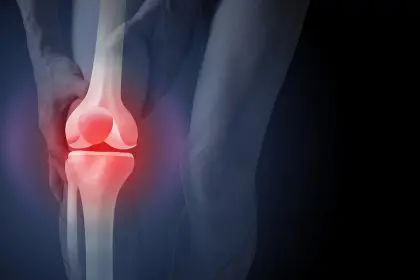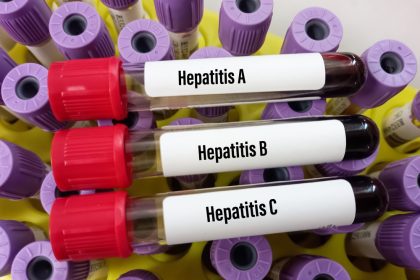Summer’s scorching temperatures bring more than just discomfort and high energy bills. A terrifying health phenomenon is emerging from the world’s most brutal heat waves, one that’s catching medical experts and families completely off guard. The connection between extreme heat and deadly bacterial infections is becoming impossible to ignore, and the implications are more serious than anyone imagined.
What started as isolated incidents in traditionally hot regions has evolved into a global pattern that’s reshaping how we think about extreme weather and public health. The deadly combination of rising temperatures and bacterial spread is creating new danger zones in places where families never expected to face such threats.
The sinister way heat waves create perfect conditions for infection
Extreme temperatures don’t just make people uncomfortable – they fundamentally alter how our bodies defend against dangerous bacteria. When heat waves strike, they create a cascade of biological changes that leave people vulnerable to infections that would normally be fought off easily.
The human body’s natural defense systems become compromised during prolonged exposure to extreme heat. The delicate tissues lining the nose and throat, which normally act as barriers against bacterial invasion, begin to dry out and weaken. This creates microscopic openings that allow dangerous bacteria to penetrate deeper into the body than they could under normal conditions.
Heat waves also bring environmental changes that make bacterial transmission much more likely. The dry, dusty conditions that typically accompany extreme heat create perfect conditions for airborne bacteria to survive and spread. Dust particles become carriers, transporting infectious agents through the air where they can be inhaled by unsuspecting victims.
The combination of weakened human defenses and enhanced bacterial survival creates a perfect storm for infection. What makes this particularly dangerous is that these conditions can persist for days or weeks during extended heat events, giving bacteria ample opportunity to spread through communities.
The expanding geography of danger
Traditionally, certain regions of the world have been known for seasonal bacterial outbreaks that coincide with hot, dry periods. The so-called “meningitis belt” across parts of Africa has long been recognized as a high-risk area where families brace for annual outbreaks between December and June.
But climate change is rewriting the rules of where and when these dangerous outbreaks occur. As global temperatures rise and weather patterns shift, the geography of risk is expanding into areas that were previously considered safe. Heat waves are becoming more intense and lasting longer, creating dangerous conditions in regions that lack the infrastructure and experience to handle such health threats.
Areas of West Africa and Asia that were once on the periphery of high-risk zones are now experiencing earlier and more severe outbreaks. The timing of these epidemics is also shifting, with dangerous periods starting sooner and lasting longer than historical patterns would suggest.
This expansion isn’t limited to traditionally hot climates. Dense urban areas in Southern Europe, parts of North America, and regions of South Asia are showing signs of increased vulnerability during extreme heat events. Cities create their own heat island effects, amplifying already dangerous temperatures and creating conditions that can support bacterial transmission.
Why your community might be next on the list
The most unsettling aspect of this emerging threat is its unpredictability. Communities that have never dealt with heat-related bacterial outbreaks are finding themselves in the crosshairs of a changing climate. Even areas with mild summers can experience sudden, dangerous heat waves that create temporary conditions favorable to bacterial spread.
Urban environments face particular challenges during extreme heat events. The concentration of people in relatively small areas, combined with the heat-amplifying effects of concrete and asphalt, can create dangerous hotspots. When heat waves strike cities, the combination of stressed immune systems and close quarters can accelerate the spread of infectious bacteria.
Migration patterns during extreme weather events also contribute to the spread of risk. When heat waves make certain areas uninhabitable, people naturally move to cooler locations, potentially carrying bacterial infections with them. This movement can introduce dangerous bacteria to communities that lack immunity or preparedness.
The changing nature of seasons due to climate change is also eliminating traditional barriers to bacterial spread. Warmer winters and extended hot seasons allow bacteria to survive in regions where they would previously have been killed off by cold temperatures. This persistence means that bacteria can establish footholds in new territories and create ongoing risks.
The most vulnerable members of every community
Not everyone faces equal risk during heat-related bacterial outbreaks. Certain groups are particularly vulnerable to both the direct effects of extreme heat and the infectious diseases that can flourish during these conditions.
Children and elderly adults are at the highest risk because their immune systems may not function optimally under heat stress. Young children’s immune systems are still developing, while older adults may have compromised immune function due to age or underlying health conditions. Both groups also have more difficulty regulating body temperature, making them more susceptible to heat-related health problems.
Urban populations, particularly those in low-income areas, face compounded risks during heat waves. Overcrowded living conditions, poor ventilation, and limited access to air conditioning create environments where both heat stress and bacterial transmission thrive. These communities often lack the resources to escape dangerous conditions or seek prompt medical care.
Communities with limited healthcare access are particularly vulnerable because early detection and treatment are crucial for preventing serious complications from bacterial infections. Remote areas, underserved urban neighborhoods, and regions with strained healthcare systems may not have the infrastructure needed to quickly identify and respond to outbreaks.
Recognizing the warning signs before it’s too late
The speed at which bacterial meningitis can progress makes early recognition absolutely critical. What starts as seemingly minor symptoms can escalate to life-threatening complications within hours, making awareness and quick action essential for survival.
The classic symptoms include severe headaches that don’t respond to typical pain relievers, neck stiffness that makes it difficult to touch the chin to the chest, and confusion or altered mental state. Fever often accompanies these symptoms, though it may not always be present in the early stages.
Sensitivity to light is another key warning sign that shouldn’t be ignored. People with bacterial meningitis often find bright lights painful and may prefer to stay in darkened rooms. This symptom, combined with the others, creates a distinctive pattern that should prompt immediate medical attention.
The timing of symptoms in relation to recent heat waves is also important to consider. If several people in a community develop similar symptoms within days or weeks of an extreme heat event, it could indicate an outbreak that requires urgent public health intervention.
Protecting yourself and your family from heat-related health threats
Prevention strategies must address both the direct effects of extreme heat and the increased risk of bacterial transmission during these periods. Creating multiple layers of protection can significantly reduce the risk of serious illness.
Maintaining good air quality becomes crucial during heat waves when bacterial transmission risk is elevated. Air purifiers can help remove dust and airborne particles that might carry bacteria, while proper ventilation can prevent the buildup of contaminated air in living spaces.
Staying hydrated takes on added importance beyond just preventing heat-related illness. Proper hydration helps maintain the body’s natural defense mechanisms, including the mucous membranes that protect against bacterial invasion. During extreme heat, fluid needs increase dramatically, and many people underestimate how much additional water they need.
Avoiding dusty environments becomes a priority when heat waves create conditions favorable to bacterial spread. When outdoor activities are necessary, wearing masks can help filter out dust and other particles that might carry bacteria. This is particularly important in urban areas where dust can contain various contaminants.
The role of vaccination in heat wave preparedness
Vaccination strategies need to be reconsidered in light of changing climate patterns and expanding risk zones. Traditional vaccination schedules may not provide adequate protection as bacterial outbreaks become more unpredictable and widespread.
Children, college students, and travelers are particularly important vaccination targets because they often live in close quarters or move between different areas where they might encounter new bacterial strains. Ensuring that vaccinations are current before heat wave seasons can provide crucial protection.
Healthcare authorities are beginning to recommend earlier and more widespread vaccination campaigns in areas that are experiencing changing weather patterns. This proactive approach recognizes that waiting for outbreaks to occur may be too late to prevent serious illness and death.
Preparing communities for the new reality
Community preparedness takes on new urgency as the connection between extreme heat and bacterial outbreaks becomes clearer. Local health departments need to develop rapid response capabilities that can quickly identify and contain outbreaks during heat wave conditions.
Early warning systems that combine weather monitoring with disease surveillance can help communities prepare for potential outbreaks before they become widespread. These systems can trigger preventive measures like increased vaccination campaigns or public health advisories.
Healthcare facilities need to prepare for the possibility of multiple cases arriving simultaneously during heat wave periods. Having adequate supplies of antibiotics and other treatments readily available can make the difference between manageable cases and tragic outcomes.
The future landscape of climate-related health threats
The relationship between extreme weather events and infectious disease outbreaks represents a new frontier in public health. As climate change continues to alter global weather patterns, the traditional boundaries between safe and dangerous zones will continue to shift.
Understanding these connections allows communities to prepare proactively rather than simply reacting to crises as they occur. Investment in monitoring systems, healthcare infrastructure, and community education can help reduce the impact of future outbreaks.
The integration of climate science with public health planning is becoming essential for protecting communities from emerging threats. Weather forecasting can now include health risk assessments that help people make informed decisions about protection strategies.
Taking action in an uncertain world
The emerging connection between heat waves and bacterial outbreaks demands a new level of awareness and preparation from individuals and communities alike. While the threat is real and growing, knowledge and preparation can significantly reduce the risks.
Staying informed about local weather patterns and health advisories during extreme heat events is now a crucial part of family safety planning. Having emergency supplies, knowing the signs of serious illness, and understanding when to seek immediate medical care can save lives.
The changing climate is creating new health challenges that require adaptive responses from everyone. By understanding the connections between extreme weather and infectious disease, communities can build resilience against threats that previous generations never had to consider. The key is staying alert, prepared, and ready to act when dangerous conditions arise.

















